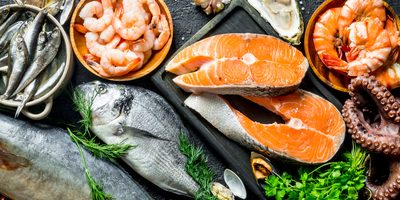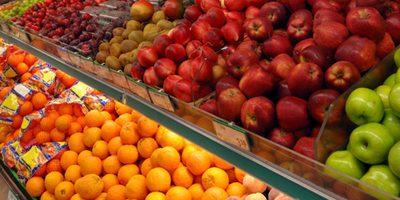
New five-country study reveals wide variation in salt content across processed fish and meat products, offering opportunities to reduce salt
A new study of processed meats and fish products in five countries showed great variations in salt content, potentially signalling opportunities for countries and their consumers, manufacturers and policy makers to reduce excessive salt, meet World Health Organization (WHO) targets and improve people’s health.
Of the five countries studied, China had the highest amount of salt in both processed meat and fish products (1050 mg/100 g). The United States was second (655 mg/100 g), followed by South Africa (571 mg/100 g), Australia (489 mg/100 g) and the UK (432 mg/100 g).
A wide range exists between countries and within the product categories. For example, roasted chicken in China had 4.5 times more salt than the roasted chicken in the UK, 4.5 times more salt in chilled fish than the US and paté and meat spreads had 4 times more than Australia. Yet China led all five countries for less salt in bacon, frozen meat, salami and cured meats, dried meat and frozen fish.
“Eating too much salt contributes to high blood pressure and greater risk of stroke, heart disease and premature death. Nearly everyone eats too much salt. The large range of salt in processed meats and fish products clearly shows that there is scope to reduce salt within those categories,” said study researcher Puhong Zhang, Associate Director, The George Institute, China, and, Associate Professor, Faculty of Medicine, UNSW Sydney. “Since identical products have more or less salt, food manufacturers should consider joining the ‘race to the bottom’ and aim to produce products with less salt.”
In developed countries, about 80% of people’s salt intake comes from packaged food, including processed products while in developing countries like China, the majority of salt intake derives from cooking and seasoning behaviours. However, with rapid economic growth and urbanization, developing country share of salt intake from processed foods is growing quickly.
Researchers used the UK’s 2017 sodium reduction targets as the framework to review the products, as well as the related “traffic light” system used by the UK (sodium level was defined as low (< 120mg/100g), medium (120 ≤ sodium ≤ 600mg/100g), and high (> 600mg/100g); and expressed as green, amber and red accordingly).
Among the study’s noteworthy findings:
- Many processed meat and fish products were in the red and amber traffic light categories. The UK had the highest proportion of green light products at 12.7% of all meat and fish products, followed by the US (11.7%) and Australia (6.0%), while in China and South Africa it was no more than 5%.
- For all categories of processed meat and fish products assessed, the countries with sodium contents meeting 2017 UK sodium reduction targets were the UK (26.6%), Australia (23.2%), South Africa (22.4%), the US (18.4%) and China (7.1%).
The study was funded by the Ministry of Science and Technology of People’s Republic of China (2016YFC1300200) and the National Institute for Health Research (NIHR, NIHR Global Health Research Unit Action on Salt China at Queen Mary University of London).
The study involved products from major supermarket chains in each of the five countries, with salt content determined from the product nutrition information on the packaging. Processed fish included canned; chilled; frozen and, ‘other’. Processed meats included meat alternatives; bacon; canned meat; frozen meat; meat burgers; salami and cured meats; sausages and hot dogs; sliced meat; dried meat; paté and meat spreads; kebabs; ‘other’ meat products; raw flavoured meats; whole hams and similar products; roast chicken; and raw unflavoured meats. Information displayed on the product packages, including product, nutrition and ingredient information, were entered into a uniform web-based data management system.
In 2010, The George Institute for Global Health established a global food composition database designed to help track processed food nutrition worldwide as an important part of INFORMAS (the International Network for Food and Obesity/non-communicable diseases Research, Monitoring and Action Support). All five countries studied are included in INFORMAS.
“Setting sodium targets for processed foods is an effective way to reduce sodium content of packaged foods. This study has three key positive takeaways for consumers, manufacturers and policy makers: consumer demand for less salty foods can be supported within existing food products; manufacturers can now better see the possibilities of developing less salty but still attractive selections; and, policymakers can recognize that salt targets can be set for the market to respond,” said Professor Yuxia Ma, Vice Dean, School of Public Health, Hebei Medical University.
Study findings are published in BMJ Open
https://bmjopen.bmj.com/lookup/doi/10.1136/bmjopen-2020-046412







